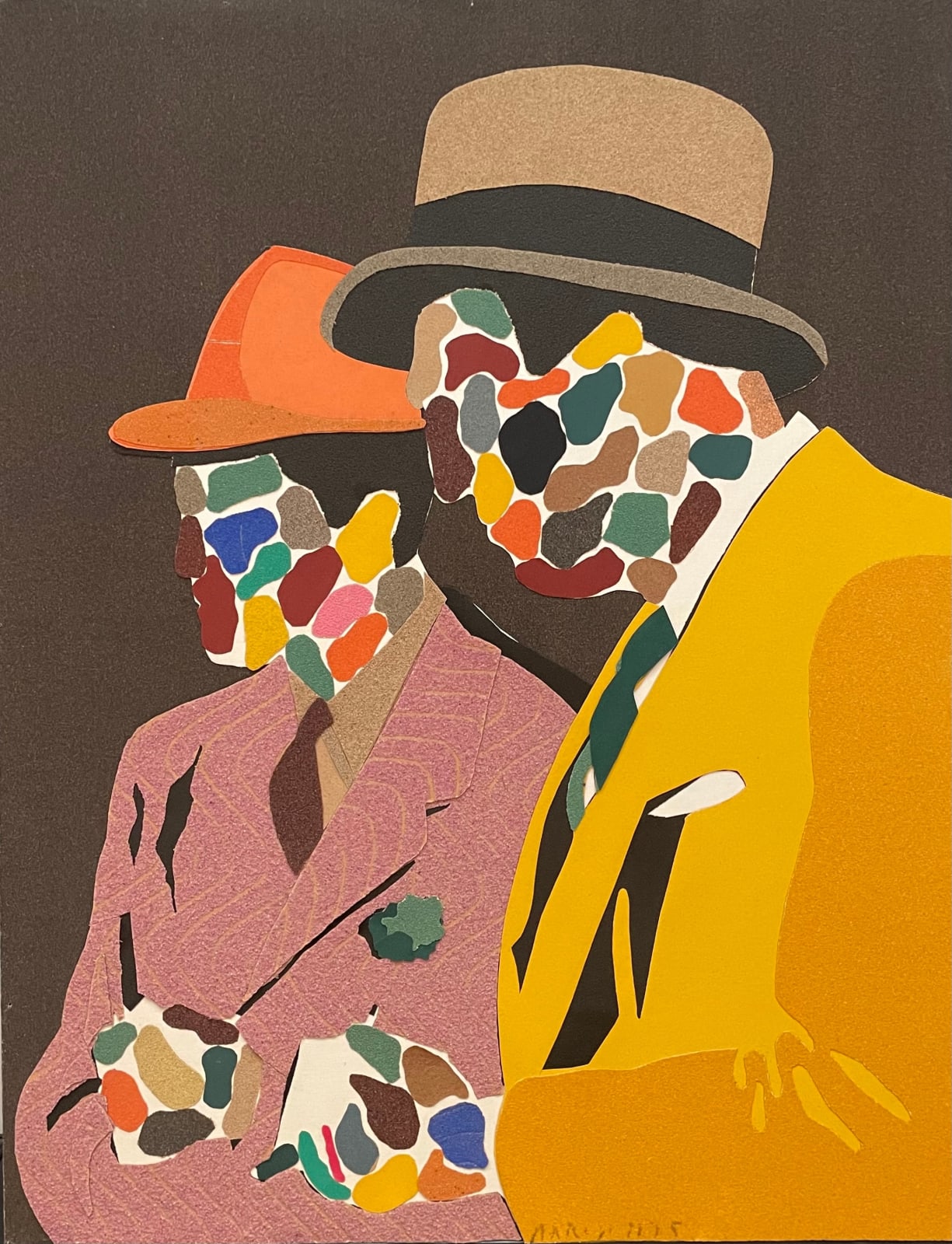Eduardo Arroyo
Parmi les peintres, 1975
Mixed media on paper laid on panel (sandpaper and canvas collage on paper)
91 x 70 cm
Signed and dated on the lower right
Titled, Counter-signed and counter dated on the reverse
Titled, Counter-signed and counter dated on the reverse
Copyright The Artist
‘... His homage to a singular Sunday painter, Winston Churchill, at his easelthe ironic and cruel portraits devoted to his ‘fellow’ painters of the past.Among the painters: elegant, faceless, their...
‘... His homage to a singular Sunday painter, Winston Churchill, at his easelthe ironic and cruel portraits devoted to his ‘fellow’ painters of the past.Among the painters: elegant, faceless, their skin studded with spots of colourwhich mask and reveal them as much as they blind...’. (Michel Sager)
Born in Madrid in 1937 and deceased in the same city in 2018, Arroyo belongs to the Figuration Narrative movement that developed in Europe in the early 1960s. He paints humanity through a series of images whose origins lie in society, history, art and literature. Eduardo Arroyo, who is also a writer, uses fragmentary narrative with humour and a taste for paradox. This is reflected in his highly structured pictorial work, which displays a constant sense of freedom.
A committed artist, Eduardo Arroyo rejects any self-indulgent aestheticisation of art and defends the exemplarity of the work and the power of the image. He wants his painting to be accessible to as many people as possible. His canvases are painted in solid colours, but he also experimented with collage. His use of nonsense and the absurd makes him a direct heir to Lewis Carroll and Francis Picabia.‘Painting is in a way literary, and it is in this sense that I work on themes.themes. There's a beginning, an end, characters, and the ambiguity inherent innovels. So it's a narrative, as if I'd written fifteen or so novels... ’
Born in Madrid in 1937 and deceased in the same city in 2018, Arroyo belongs to the Figuration Narrative movement that developed in Europe in the early 1960s. He paints humanity through a series of images whose origins lie in society, history, art and literature. Eduardo Arroyo, who is also a writer, uses fragmentary narrative with humour and a taste for paradox. This is reflected in his highly structured pictorial work, which displays a constant sense of freedom.
A committed artist, Eduardo Arroyo rejects any self-indulgent aestheticisation of art and defends the exemplarity of the work and the power of the image. He wants his painting to be accessible to as many people as possible. His canvases are painted in solid colours, but he also experimented with collage. His use of nonsense and the absurd makes him a direct heir to Lewis Carroll and Francis Picabia.‘Painting is in a way literary, and it is in this sense that I work on themes.themes. There's a beginning, an end, characters, and the ambiguity inherent innovels. So it's a narrative, as if I'd written fifteen or so novels... ’
Provenance
Atelier de l’artisteGalerie Fred Lanzenberg, Bruxelles
Collection particulière, France (acquis auprès de la dernière)
Collection particulière, par descendance
Literature
Certificat d'authenticité de la part de Mme. Fabienne di Rocco, ayant-droit de l'artiste.5
de
5
